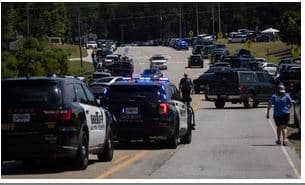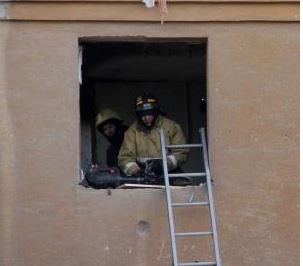 NEW YORK: New York Governor Andrew Cuomo has outlined a phased plan for re-opening the economy of the state which is America’s COVID-19 epicenter, saying closing down everything forever is not sustainable.
NEW YORK: New York Governor Andrew Cuomo has outlined a phased plan for re-opening the economy of the state which is America’s COVID-19 epicenter, saying closing down everything forever is not sustainable.
He said that reopening the state, which has 318,953 confirmed coronavirus cases and more than 25,000 deaths, is more difficult than the closedown.
“People are all talking about reopening, which we should be talking about. This is not a sustainable situation. Close down everything, close down the economy, lock yourself in the home.
“You can do it for a short period of time but you can’t do it forever,” Cuomo said on Monday at his daily coronavirus briefing.
The governor said that factors such as new infections, healthcare and testing capacity will determine which regions and sectors are allowed to reopen.
“The closedown was relatively simple, right? You go into the basement, you throw the big power switch and everything just goes down. Close the businesses. Stay at home. It was a blunt operation and when that was done all across the country, just stop everything now.
“When you go to restart, the reopening, now knowing what we know, it’s more nuanced. You have to be more careful. And again, no one has done this before, and no one has been here before. So, first, start by learning the lessons that we did learn through this experience,” he said.
Cuomo said the state will measure whether a region can re-open based on four factors – the number of new infections, healthcare capacity, diagnostic testing and contact tracing – and will continue to monitor these factors throughout the re-opening process to prevent a second wave of the virus and protect the health and safety of New Yorkers.
Cuomo’s New York Pause order, which required people to stay-at-home and all non-essential businesses closed, will expire on May 15 but New York City and its suburbs, which still have a high number of coronavirus cases, may be among the last places to start re-opening, he said.
“While we continue to reduce the spread of the COVID-19 virus, we can begin to focus on re-opening, but we have to be careful and use the information we’ve learned so we don’t erase the strides we’ve already made.
“Re-opening is not going to happen statewide all at once – New York has diverse regions and those regions have different circumstances, so rather than wait for the whole state to be ready to re-open we are going to analyse the situation on a regional basis, the governor said.
Cuomo also outlined which industries and businesses can open in each phase of the state’s re-opening plan across the 10 regions of New York.
Businesses considered “more essential” with inherent low risks of infection in the workplace and to customers will be prioritised, followed by other businesses considered “less essential” or those that present a higher risk of infection spread.
Regions must not open attractions or businesses that would draw a large number of visitors from outside the local area.
Under the phased re-opening plan, construction and manufacturing will open first as well as some retail stores will reopen for curbside pickup.
The state will evaluate the effect of phase one after two weeks to ensure cases are not rising.
The second phase of reopening would include professional services, more retailers and real estate firms as soon as the end of May.
Restaurants, bars and hotels would be allowed to re-open in the third phase followed by a final phase that would include re-opening cinemas and theaters.
On the factor of new infections, he said based on guidelines from the Centers for Disease Control and Prevention (CDC), regions must have at least 14 days of decline in total net hospitalisations and deaths on a three-day rolling average.
In regions with few COVID-19 cases, the region cannot exceed 15 net new total hospitalisations or five new deaths on a three-day rolling average.
Every region must have the healthcare capacity to handle a potential surge in cases.
Regions must have at least 30 per cent of the total hospital and ICU beds available.
This is coupled with the new requirement that hospitals have at least 90 days of personal protective equipment stockpiled.
Each region must also have the capacity to conduct 30 diagnostic tests for every 1,000 residents per month.
The state is rapidly expanding capacity statewide to help all regions meet this threshold.
Regions must have a baseline of 30 contact tracers for every 100,000 residents, and additional tracers based on the projected number of cases in the region.
The state is currently building an army of contact tracers with former Mayor Micheal Bloomberg to meet the needs of each region statewide.
More than one million New Yorkers have already been tested for COVID-19 so far.
























